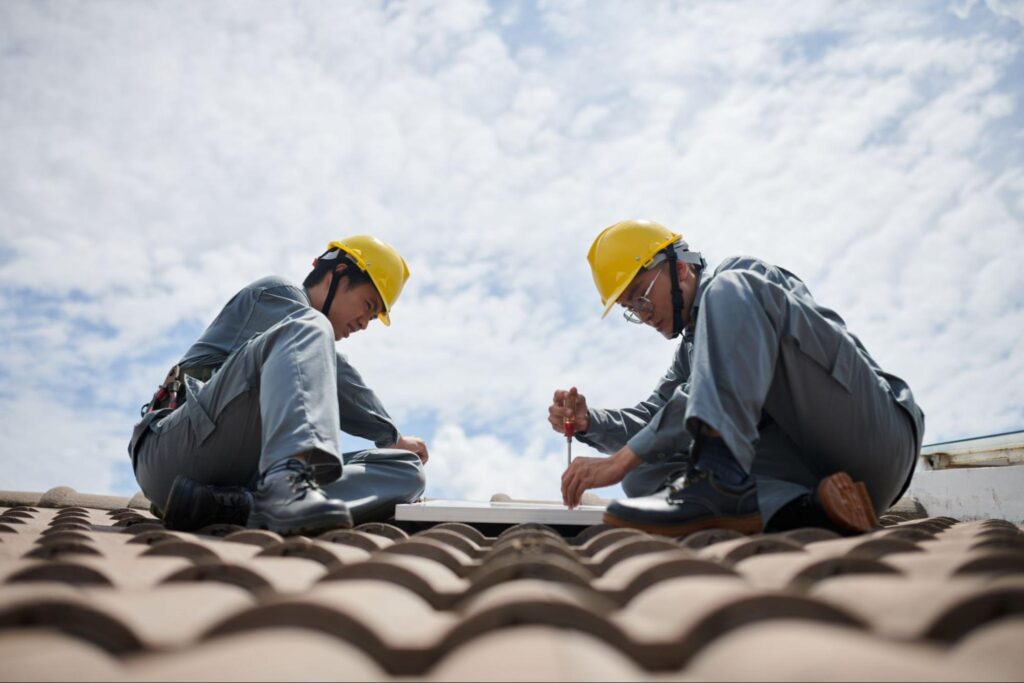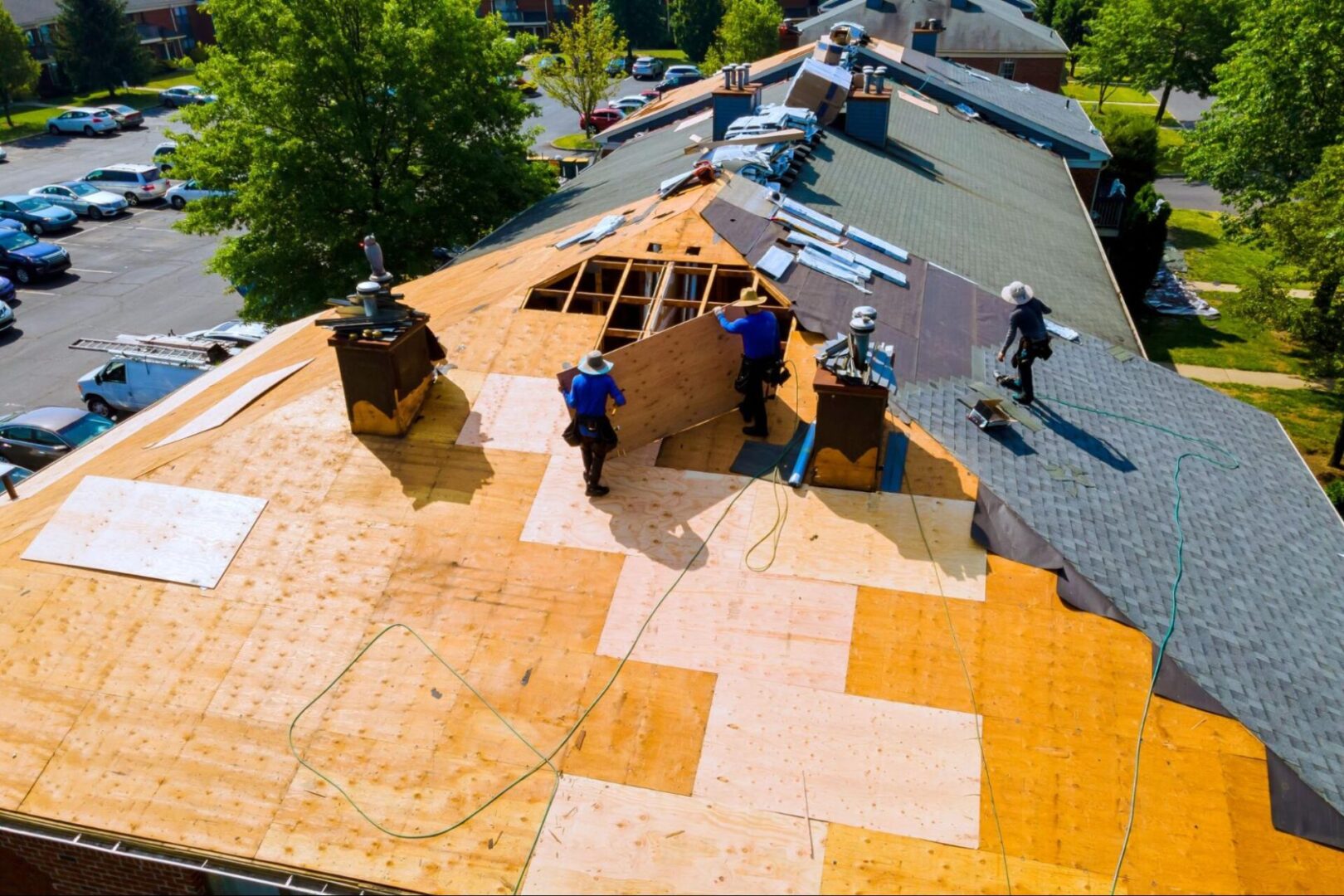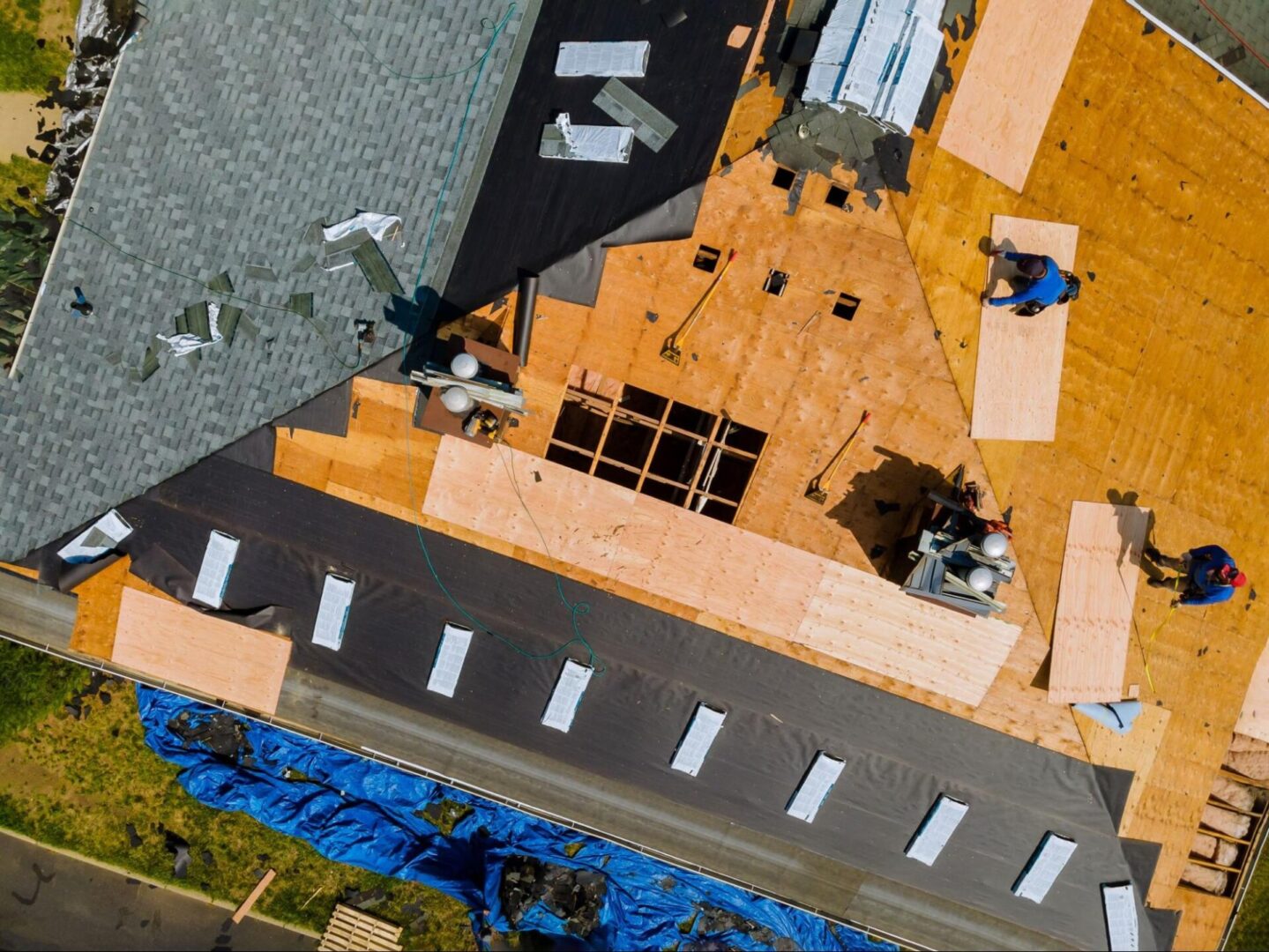
A sturdy, well-maintained roof is a cornerstone of a safe home. It shields your family and belongings from the elements, ensuring comfort and security. Over time, roofs face wear and tear, leaving homeowners to decide between roof repairs or total replacements. This decision goes beyond costs, requiring careful consideration of the roof’s condition, age, and potential future problems. Making the right choice can save money, prevent more significant issues, and protect the value of your home for years to come.
Common Signs That Indicate Roofing Problems
Roof damage can escalate quickly if early warning signs are ignored. Identifying these signs helps homeowners decide between roof replacements and repairs. Visible and hidden indicators reveal the extent of the problem and the best course of action. Timely attention to these signs ensures the roof remains functional and safe.
Cracked, Curled, or Missing Shingles
Cracked, curled, or missing shingles are common indicators of wear. These signs often result from aging or weather exposure. Repairs can address individual shingles, but widespread damage might require a replacement. Neglecting these signs can lead to further complications.
Interior Water Stains or Leaks
Interior water stains or leaks suggest underlying issues. Water intrusion often stems from damaged flashing, shingles, or roof seams. Repairs can fix localized leaks, but extensive water damage may require replacement. Ignoring leaks risks mold growth and structural deterioration.
Granule Loss on Asphalt Shingles
Granule loss on asphalt shingles signals significant aging. Granules protect shingles from the sun and weather elements. Repairs may resolve small areas of granule loss, but replacements are necessary if wear is uniform across the roof. Granule accumulation in gutters is an early sign to watch for.
Sagging or Uneven Rooflines
Sagging or uneven rooflines point to structural issues. This problem often indicates severe water damage or compromised supports. Replacements are usually the best option for sagging roofs, as repairs alone may not be sufficient. Quickly addressing sagging prevents further damage to the home.
When to Consider Roof Replacements
A roof replacement is necessary for severe or widespread damage. Indicators like sagging, water damage, or aging materials suggest it’s time. Ignoring these signs can lead to more extensive damage over time. Replacing the roof at the right time prevents more significant issues later.
Extensive Structural Damage
When damage affects the roof’s structure, replacement is vital. Structural issues can compromise the home’s safety and stability. Replacing the roof ensures a solid foundation for years ahead and reduces future risks like water intrusion or collapse.
Roof Age Beyond Its Lifespan
Roof materials like asphalt shingles have a specific lifespan. Aging roofs lose their ability to protect effectively over time. Replacing the roof ensures the home stays safe and secure. Newer roofs also comply with updated building codes and standards.
When Roof Repairs Are the Better Choice
Roof repairs work best for minor or localized damage. They are ideal for fixing problems without replacing the entire structure. This option suits those looking to address immediate concerns. Choosing repairs can be both cost-effective and efficient.
Addressing Leaks or Minor Issues
Small leaks or isolated damage often only require repairs. Promptly fixing these issues prevents them from spreading further. Repairs are quick, minimizing disruptions to daily life. They also keep costs manageable for homeowners.
Maintaining Newer Roofs
Newer roofs typically need minor fixes rather than replacements. Repairs can efficiently address small wear-and-tear issues, helping preserve the roof’s condition for extended periods and avoiding unnecessary expenses tied to premature replacements.

Types of Roof Replacement Options
The choice of replacement depends on the roof’s existing structure, material preferences, and specific needs. Understanding the different replacement methods helps homeowners pick the most suitable option. Each type offers unique benefits and challenges.
Full Roof Replacement
A total roof replacement involves removing the old roof entirely before installing a new one. This method is ideal for roofs with severe damage, structural issues, or outdated materials. It allows for thoroughly inspecting the underlying structure, ensuring a solid foundation. While more expensive upfront, it provides the longest-lasting and most reliable solution. Additionally, this method ensures no lingering damage from old roofing materials impacts the new installation.
Roof Overlay
An overlay involves installing new shingles over the existing roof without removing the old materials. This method is faster and less disruptive, making it a more affordable option. It works well for structurally sound roofs with surface damage. However, overlays may not last as long as total replacements and can conceal underlying issues. Homeowners must also ensure local building codes permit this method, as some areas restrict multiple roofing layers.
Cost Considerations for Roof Replacements
The cost of a roof replacement depends on various factors. Homeowners should understand these cost components to plan their budgets effectively. Balancing upfront expenses with long-term benefits is critical to making a smart investment.
Material Costs
Materials account for a significant portion of replacement costs. Premium materials like slate or metal are more expensive but last longer. Asphalt shingles are cheaper upfront but may require replacements sooner. High-quality materials can save money in the long run by reducing maintenance needs and improving durability.
Labor Costs
Labor costs vary depending on the contractor’s experience and the project’s complexity. Roofs with steep pitches or intricate designs may require specialized labor, increasing costs. Experienced contractors may charge more, but they often deliver higher-quality artistry. Investing in skilled labor ensures that the job is done right the first time, reducing future repair expenses.
Roof Size and Accessibility
Roof size and accessibility affect total expenses. Larger roofs or those with difficult-to-reach areas require more materials and time. Homes with complex designs, such as dormers or skylights, may also increase installation time. Proper planning and accurate measurements help homeowners anticipate these additional costs.
Additional Expenses
Additional costs may include removing old materials, structural repairs, or upgrading insulation. Homeowners should factor in these potential expenses when planning their budget. Some projects may also require permits or inspections, which add to the overall cost. Considering these factors helps avoid surprises during the replacement process.
Long-Term Benefits of Roof Replacements
A roof replacement is a significant investment, but it offers long-term advantages. In addition to improving the home’s safety, functionality, and energy efficiency, it increases property value, making it an asset for homeowners planning to sell. These benefits outweigh the upfront costs, providing lasting peace of mind.
Enhanced Structural Integrity
New roofs eliminate hidden issues like rot, leaks, and mold. They enhance the home’s structural integrity and reduce risks of further damage. A stable roof protects the house from environmental factors like storms and heavy snow. Investing in a replacement ensures the home remains safe and sound for decades.
Improved Energy Efficiency
Modern roofing materials improve energy efficiency by reflecting heat and reducing energy costs. This benefit is especially noticeable with materials like metal or cool roofs. Energy-efficient roofs also help regulate indoor temperatures, lowering heating and cooling costs. Over time, these savings offset the initial investment of a replacement.
Increased Curb Appeal
Replacing a roof enhances a home’s aesthetic appeal. A fresh, high-quality roof boosts curb appeal and can attract potential buyers. New roofing allows homeowners to update the style and color to suit current trends. This added visual appeal increases the home’s market value.
Warranty and Long-Term Security
Roof replacements often come with warranties that cover materials and labor. These warranties ensure protection against future issues and offer long-term security. Warranties give homeowners peace of mind, knowing repairs or replacements are covered for a specified period. Choosing a reputable contractor ensures that warranties are honored and upheld.
Comparing Roof Replacement and Repair Costs
Roof replacements and repairs vary significantly in terms of costs. While repairs are less expensive upfront, they may require frequent attention over time. A replacement involves higher initial costs but eliminates recurring expenses. Comparing the costs helps homeowners determine the most cost-effective option for their situation.
Upfront Cost of Repairs
Repairs typically address localized damage, which initially keeps costs low. However, neglecting widespread damage can lead to repeated repairs, increasing cumulative expenses. For example, patching leaks multiple times can add up over the years. Carefully assessing repair costs helps homeowners weigh them against replacement expenses.
Long-Term Savings With Replacements
Roof replacements solve all underlying problems in one comprehensive project. Although costly, they eliminate the need for ongoing maintenance and reduce future risks. New roofs often come with energy-efficient features that lower utility bills over time, making replacements a more cost-effective solution in the long term.

Age of the Roof
For older roofs nearing the end of their lifespan, replacements are often more cost-effective than multiple repairs. Investing in a new roof prevents long-term issues and adds value to the property. Repairs may not provide the same level of protection, leading to additional expenses later. Evaluating the roof’s age helps homeowners make the best financial choice.
Warranty and Financial Protections
Factors like warranties and energy savings further impact the cost comparison. Replacements may offer better financial returns in the long run due to these added benefits. Many warranties on new roofs cover repairs or replacements for decades. This protection ensures that the investment is safeguarded against unforeseen issues.
Understanding Roof Replacement and Repair Materials
Roofing materials significantly influence the decision between repairs and replacements. Each type has unique characteristics, maintenance needs, and lifespans. Knowing how each material responds to damage or aging helps homeowners make informed decisions. The material type can also affect costs, durability, and overall performance.
Asphalt Shingles
Asphalt shingles are the most common and cost-effective material. They have a 20–30 year lifespan and are relatively easy to repair. However, they can be prone to granule loss and weather-related damage over time. Replacements may be necessary when wear becomes widespread.
Metal Roofs
Metal roofs are durable, long-lasting, and energy-efficient. They often last 40–70 years and resist harsh weather well. Repairs can address minor dents or damage, but replacements are needed for severe structural issues. Metal roofs can also be recycled, making them eco-friendly.
Tile Roofs
Tile roofs, often made of clay or concrete, are known for longevity. With proper maintenance, they can last over 50 years. Repairs typically involve replacing cracked or broken tiles, while replacements are rare unless structural issues arise. Their heavy weight may require additional roof reinforcement.
Slate Roofs
Slate roofs are among the most durable, lasting over 75 years. They resist fire, water, and harsh climates but can be expensive to install or replace. Repairs involve replacing individual slate pieces, which may require skilled professionals. Their lifespan makes replacements less frequent.
Choosing Between Roof Replacement and Repair for Your Home
Your roof isn’t just a structure; it’s the guardian of your home and the protector of your family’s safety. Choosing between a repair or replacement isn’t just a financial decision—it’s about safeguarding your peace of mind and the long-term value of your investment. A well-maintained roof speaks to the care you give your home, reflecting pride and foresight. Don’t wait for problems to escalate; take charge today and ensure your home is as solid and enduring as its memories.
Visit our Minnesota’s 1st Choice Replacement Windows and Doors blog for practical tips on protecting your home.

